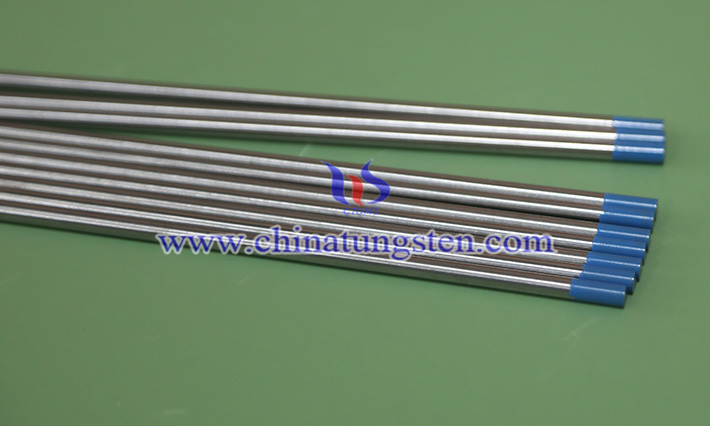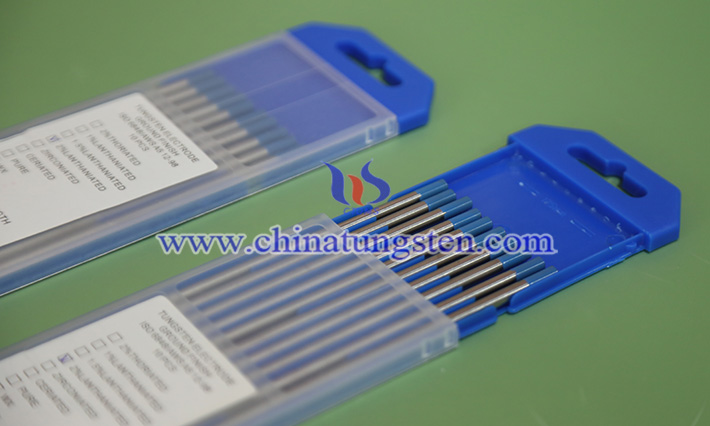How Is the Adaptability of Lanthanum Tungsten Electrodes in Automated Welding Equipment?
- Details
- Category: Tungsten Information
- Published on Wednesday, 30 July 2025 16:39
With the continuous improvement of industrial automation, automated welding equipment is becoming increasingly widely used in the manufacturing industry.
Automated welding not only improves production efficiency but also ensures consistent and controllable weld quality. As a crucial consumable in the automated welding process, the performance of welding electrodes directly impacts the stability of equipment operation and welding results.
Lanthanum tungsten electrodes, as high-performance, non- radioactive tungsten-based alloy electrodes, are becoming one of the preferred choices for automated welding systems due to their excellent physical and chemical properties. So, how well do these tungsten electrodes perform in automated welding equipment?

1. Excellent arc starting performance, suitable for high frequency starting
Automated welding equipment typically uses high-frequency arc starting technology to achieve non-contact arc ignition, requiring electrodes with fast and stable arc starting capabilities. Lanthanide tungsten electrodes, by doping tungsten with 1.0% to 2.0% lanthanum oxide, significantly reduce the electron work function and increase the efficiency of thermal electron emission, ensuring rapid arc starting even under low current conditions. Compared to pure tungsten electrodes, lanthanide tungsten electrodes offer lower arc starting voltage and smoother arc starting, reducing equipment downtime and maintenance due to arc starting difficulties, significantly improving the continuity and productivity of automated production lines.
2. Long service life and reduced equipment maintenance frequency
Automated welding equipment places extremely high demands on electrode stability and lifespan. Lanthanum tungsten electrodes offer exceptional heat resistance and ablation resistance. Their tip structure remains stable over extended periods of operation, making them less susceptible to tip collapse and melt balling. Their low burnout rate significantly extends electrode life, reducing replacement frequency and equipment downtime and maintenance costs. Furthermore, the excellent contamination resistance of lanthanum tungsten electrodes effectively prevents arc instability caused by electrode contamination during welding, ensuring efficient operation of automated equipment.
3. Wide current adaptability range to meet diverse welding needs
Automated welding systems often need to adapt to different workpiece materials and welding processes, and have high requirements for the current application range of the electrode. Lanthanum tungsten electrodes can work stably in a current range as low as 10A, up to 250A or even higher, and are suitable for welding stainless steel, carbon steel, copper alloy and other materials. Its stable arc output ensures the quality of the weld and meets the needs of automated equipment for fine control of welding parameters.

4. Various shapes and sizes, easy to be compatible with equipment
The clamping mechanism and welding gun design of automated welding equipment place strict requirements on electrode size and shape. We offer a comprehensive product line of tungsten -lanthanum electrodes, with diameters ranging from 0.5mm to 6.0mm. The tip angle and shape can be customized to suit different welding processes, such as pointed, flat, or rounded. This allows users to select electrodes based on equipment specifications and process requirements, greatly enhancing adaptability.
5. Environmentally friendly and safe, in line with the trend of automation
As global environmental and occupational health and safety requirements increase, lanthanum- tungsten electrodes, with their non-radioactive and non-toxic properties, are gradually replacing thorium-containing electrodes. These electrodes meet the environmental standards for use in modern automated welding equipment. This not only reduces factory safety risks but also facilitates logistics, transportation, and warehouse management.
- Chinatungsten Online: www.chinatungsten.com
- CTIA GROUP LTD: en.ctia.group
- Tungsten News & Price: www.ctia.com.cn
- Molybdenum News & Price: news.molybdenum.com.cn
- Tel.: 86 592 5129696; Email: sales@chinatungsten.com



 sales@chinatungsten.com
sales@chinatungsten.com